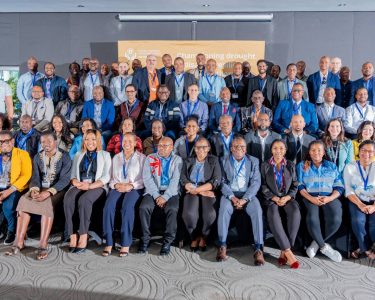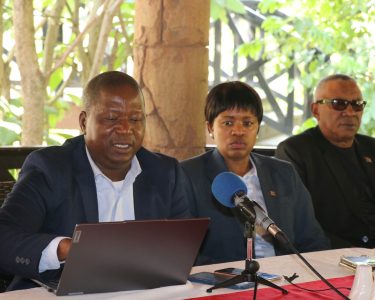…… however, more needs to be done to improve quality

By Muzi Dlamini
The Government of the Kingdom of Eswatini recognises the importance of the education sector and the role it plays in building the country’s human capital and transforming its economic and social landscape.
The government, through the Ministry of Education and Training, has been prioritising education both in terms of financing and policies (Eswatini introduced Free Primary Education (FPE) in 2010).
The government pays E560 per pupil enrolled under the FPE programme. The government also provides a bursary scheme for Orphans and Vulnerable Children (OVC) since 2003 after the Ministry of Education noted that poverty, hunger and severe drought indicated a very high dropout of children.
Read More: Over E150m needed for OVC fees grant increase
“Free textbooks and workbooks for all primary school children were implemented in 2003. These included brailled textbooks for the visually impaired after the Ministry noted that providing OVC bursary without learning materials did not have a positive impact,” states the Ministry of Education and Training in a report.
It further says pupils could not afford to buy exercise books and stationery and hence would drop out of school. Free exercise books and stationery including brail for visually impaired materials for all children in public primary schools have been provided since 2006.
Globally competitive
Speaking to Eswatini Financial Times, Coordinating Assembly of Non-Governmental Organisations (CANGO) Chief Executive Officer (CEO) Thembinkosi Dlamini said the goal needs to be ensuring the national output will compete at a global scale. He said for now the country was lagging behind comparable countries in terms of quality and needed to close those loopholes.
“We need to meet as education stakeholders to decide an education financing model that achieves inclusivity, equity, quality and encourages lifelong learning,” he said.
Dlamini says the primary school gross enrollment ratios are good but attrition of up to 40 per cent by the time pupils reach Form 5 is a lot of waste.
Read More: Youth Programme: E200m per year for 4000 graduates and 5000 artisans
“The post-secondary education and training numbers are very low for the information, technology and artificial intelligence economy that we envisage. We need to approach the education sector differently,” said the CEO.
He said without sufficient investments in education, the country could not have a workforce that will drive industrialisation, innovation and job creation. “We need to do better and focus on improving these indicators to compete on a global scale,” says Dlamini.
Primary Education
Free Primary Education is not unique to the Kingdom of Eswatini as other countries across the globe are also practising it. Most countries globally regard primary education as a priority. In the context of education is a fundamental human right; African governments have, after years of independence, embarked on the provision of free education.
In a report compiled by the University of Arkansas, it is stated that the same thing has been observed in countries outside Africa. In the United States of America (USA), for instance, elementary school is free and compulsory for all children. In Denmark, all children have access to tuition-free government school until they are 16 years old.
Danish children begin public daycare as early as nine months, and by age three 98 per cent of children in Denmark are attending public kindergartens. Primarily, the state and the municipalities finance the Danish education system. In addition to public financing, tuition fees are charged at private schools and continuation schools, and there is typically a tuition fee for adult education and continuing training programmes provided by educational institutions and adult education and training centres.
Some institutions are self-governing, while the state or the municipalities own other institutions. The self-governing educational institutions have two sources of income; government grants and their income from income-generating activities, participant fees and fees paid for unemployed people in activation programmes etc.
Read More: PEPFAR pledges E2.4 bn for Eswatini
The government grants amount to approximately 80 per cent of the total funding and are thus the primary source of revenue for the institutions. Of this amount, activity-level determined grants total approximately 92 per cent.
In Africa, developing countries like Malawi, Uganda and Lesotho have declared primary education free. The University of Arkansas says School enrollment rates in Sub-Saharan African countries have drastically increased since the introduction of Free Primary Education.
Primary healthcare in Eswatini is relatively free
Primary healthcare in Eswatini is also relatively free with standard pricing at public health centres ranging from E10 to E30 depending on the form of assistance required.
According to the World Health Organisation (WHO), Eswatini has made significant progress in combatting HIV, one of the leading causes of death in the country. With concerted efforts on testing and treatment, the country has achieved the global targets of ensuring that 95 per cent of people living with HIV know their status, that 95 per cent of them are receiving treatment and that 95 per cent of those receiving treatment have their viral load suppressed.
Eswatini became the first country in Africa to reach these global HIV targets, a decade ahead of the 2030 deadline set by Member States.
“The government has decentralised integrated HIV and tuberculosis care and treatment to community primary health care clinics and ensured that nurses are trained to initiate patients into antiretrovirals. The government has made antiretroviral drugs available and free of charge,” says WHO.
Europe
European Countries with relatively free and fully free healthcare include Austria, Belarus, Bulgaria, Croatia, Czech Republic, Denmark, Finland, France, Germany, Greece, Iceland, Isle of Man, Italy, Latvia, Lithuania, Luxembourg, Malta, Moldova, Norway, Poland, Romania, Sweden, Switzerland, Ukraine, among others.
In Germany, all Germans and legal residents of Germany are entitled to free “medically necessary” public healthcare, which is funded by social security contributions. However, citizens must still have either state or private health insurance, covering at least hospital and outpatient medical treatment and pregnancy.
It covers treatments and services, such as immunisations, prescriptions, and dental checks. This sort of national coverage helps keep average healthcare costs in Germany to a minimum and is one of the reasons the system has a positive reputation around the world.
In Denmark, most healthcare services are financed by general taxes and are mainly provided free of charge.






